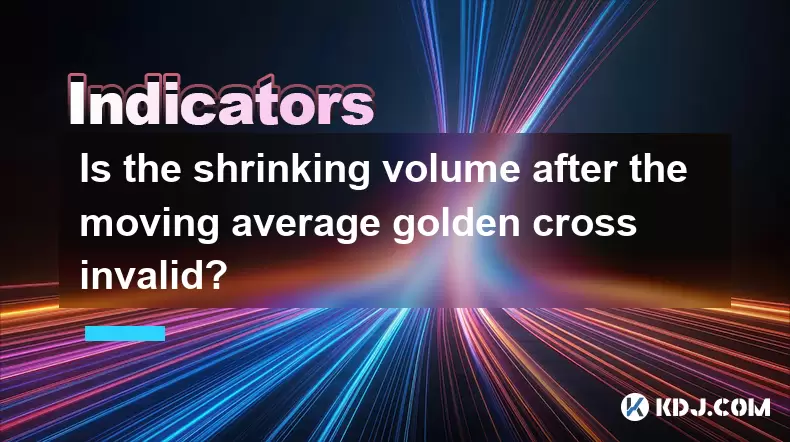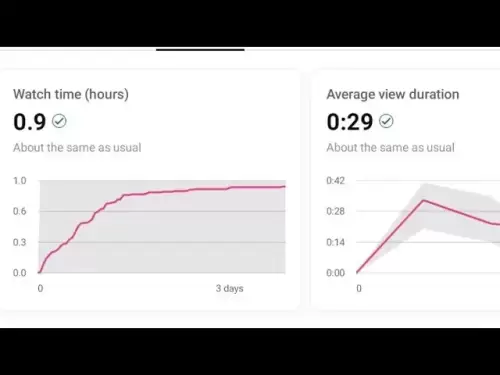-
 Bitcoin
Bitcoin $102,838.3669
-0.64% -
 Ethereum
Ethereum $2,288.9548
-5.70% -
 Tether USDt
Tether USDt $1.0003
0.01% -
 XRP
XRP $2.0782
-2.11% -
 BNB
BNB $632.3292
-1.65% -
 Solana
Solana $136.1959
-2.98% -
 USDC
USDC $1.0000
0.01% -
 TRON
TRON $0.2726
-0.11% -
 Dogecoin
Dogecoin $0.1566
-4.06% -
 Cardano
Cardano $0.5552
-5.18% -
 Hyperliquid
Hyperliquid $34.2720
-1.05% -
 Bitcoin Cash
Bitcoin Cash $466.8638
-1.20% -
 Sui
Sui $2.5776
-5.75% -
 UNUS SED LEO
UNUS SED LEO $8.9685
0.02% -
 Chainlink
Chainlink $12.0304
-5.11% -
 Stellar
Stellar $0.2375
-2.47% -
 Avalanche
Avalanche $16.9243
-3.74% -
 Toncoin
Toncoin $2.8539
-2.82% -
 Shiba Inu
Shiba Inu $0.0...01091
-4.04% -
 Litecoin
Litecoin $81.4197
-2.58% -
 Hedera
Hedera $0.1374
-5.25% -
 Monero
Monero $310.1410
-1.30% -
 Ethena USDe
Ethena USDe $1.0006
0.01% -
 Dai
Dai $1.0000
0.00% -
 Polkadot
Polkadot $3.2843
-5.48% -
 Bitget Token
Bitget Token $4.2110
-1.76% -
 Uniswap
Uniswap $6.4977
-7.96% -
 Pepe
Pepe $0.0...09321
-7.31% -
 Pi
Pi $0.5074
-6.27% -
 Aave
Aave $234.8342
-5.61%
Is the shrinking volume after the moving average golden cross invalid?
A shrinking volume after a golden cross may signal weak bullish momentum, suggesting traders should assess other indicators and market conditions before acting.
Jun 22, 2025 at 10:42 am

Understanding the Moving Average Golden Cross in Cryptocurrency
In the world of cryptocurrency trading, technical indicators play a crucial role in decision-making. One such indicator is the moving average golden cross, which occurs when a short-term moving average crosses above a long-term moving average, typically signaling a bullish trend. This event is widely followed by traders as it often precedes significant price increases. However, its reliability can be questioned when certain market conditions change, particularly volume behavior after the crossover.
The golden cross is formed under specific conditions:
- The 50-day moving average (MA) moves above the 200-day MA.
- This usually happens after a downtrend or consolidation phase.
- Volume tends to increase during and immediately after the cross, reinforcing the signal.
Despite its popularity, the golden cross does not always guarantee a successful trade. Traders must look beyond the mere formation of the cross and examine accompanying factors like volume trends.
Volume is a critical component in confirming the strength of any technical signal, including the golden cross.
What Happens When Trading Volume Shrinks After a Golden Cross?
After a golden cross forms, traders expect to see sustained or rising volume to confirm that the bullish momentum is genuine. However, there are instances where volume declines shortly after the cross, raising concerns about the validity of the signal.
A shrinking volume may suggest:
- Lack of interest from institutional or retail investors.
- Profit-taking by early buyers who entered before the cross.
- Market indecision or sideways movement rather than a strong uptrend.
When this occurs, the bullish implication of the golden cross becomes questionable. While the technical pattern itself remains intact, the absence of supporting volume could indicate that the rally lacks conviction.
Shrinking volume post-cross may imply weakening buyer pressure and should be interpreted with caution.
How to Analyze Volume Patterns After a Golden Cross
Analyzing volume patterns requires more than just a visual check of candlestick charts. It involves understanding how volume interacts with price action following the golden cross.
Key steps for analyzing volume include:
- Comparing current volume levels with historical averages: If volume drops below the average for that asset, it may indicate reduced participation.
- Observing volume spikes versus consistent volume: A single spike followed by declining volume may not be sustainable.
- Using volume-based oscillators like OBV (On-Balance Volume): These tools help assess whether buying pressure is increasing or decreasing.
Traders should also overlay volume data on top of price charts to visually identify divergences. For instance, if prices rise but volume contracts, it might suggest that the move lacks support from active buyers.
Consistent volume growth after the golden cross strengthens the signal, while a decline weakens it.
Combining Volume Analysis with Other Indicators
Relying solely on the golden cross and volume analysis may not provide a complete picture. Integrating additional tools can improve accuracy and reduce false signals.
Recommended complementary indicators:
- Relative Strength Index (RSI): Helps determine whether an asset is overbought or oversold.
- MACD (Moving Average Convergence Divergence): Offers insights into trend strength and potential reversals.
- Fibonacci retracement levels: Assist in identifying key support and resistance zones.
By combining these tools, traders can better evaluate whether a shrinking volume after the golden cross is a temporary pullback or a sign of reversal.
Multi-indicator analysis enhances confidence in interpreting post-cross volume behavior.
Case Studies: Golden Cross Followed by Shrinking Volume in Crypto Markets
Looking at real-world examples helps clarify how effective the golden cross is when followed by declining volume.
One notable example occurred with Bitcoin (BTC) in mid-2021. BTC experienced a golden cross in March, followed by a sharp rally. However, in April, despite continued price gains, volume began to taper off. This divergence was later confirmed when BTC entered a correction phase in May.
Another example is Ethereum (ETH) in late 2022. ETH showed a golden cross in November, but volume failed to sustain the move upward. Shortly after, the market saw a sharp drop, nullifying the bullish signal.
These cases demonstrate that even when the golden cross appears, a lack of volume support can lead to false breakouts and reversals.
Historical data shows that volume contraction after a golden cross often precedes market corrections.
Frequently Asked Questions
Q: Can a golden cross still be valid if volume shrinks weeks after the cross?
A: Yes, but with caution. A delayed drop in volume may indicate waning interest, especially if no new catalysts emerge to drive demand.
Q: Should I sell my position immediately if volume drops after a golden cross?
A: Not necessarily. Consider other technical indicators and fundamental factors before making a decision.
Q: How long should volume remain elevated after a golden cross to confirm a strong trend?
A: Ideally, volume should stay above average for at least 7–10 days following the cross to indicate strong participation.
Q: Is the golden cross more reliable in certain cryptocurrencies than others?
A: It tends to be more reliable in larger-cap cryptocurrencies like Bitcoin and Ethereum due to higher liquidity and clearer price action.
Disclaimer:info@kdj.com
The information provided is not trading advice. kdj.com does not assume any responsibility for any investments made based on the information provided in this article. Cryptocurrencies are highly volatile and it is highly recommended that you invest with caution after thorough research!
If you believe that the content used on this website infringes your copyright, please contact us immediately (info@kdj.com) and we will delete it promptly.
- Bitcoin in Europe: France's Budding Romance with BTC
- 2025-06-22 12:45:12
- BNB Chain Altcoin Meltdown: Navigating the Storm and Spotting Opportunities
- 2025-06-22 12:45:12
- Inherited Riches: Rare Coin Collection Valued at £6,000 – Is Your Change Worth a Fortune?
- 2025-06-22 12:25:12
- Fiat-Backed Stablecoins, Tokenized Treasuries, and DeFi: A New York Minute on the Future of Finance
- 2025-06-22 12:25:12
- Pumpfun Token Launch Faces Crypto Backlash: A Billion-Dollar Gamble?
- 2025-06-22 12:50:12
- Pepe Coin Price Prediction: Crash Risk and What's Next for Frog-Themed Crypto
- 2025-06-22 13:05:13
Related knowledge

Does the second surge in the RSI overbought zone induce more?
Jun 22,2025 at 08:35am
Understanding the RSI Overbought ZoneThe Relative Strength Index (RSI) is a momentum oscillator commonly used in technical analysis to measure the speed and change of price movements. It ranges from 0 to 100, with values above 70 typically considered overbought and values below 30 considered oversold. When the RSI enters the overbought zone for the firs...

Does the sudden contraction of ATR indicate the end of the trend?
Jun 20,2025 at 11:14pm
Understanding ATR and Its Role in Technical AnalysisThe Average True Range (ATR) is a technical indicator used to measure market volatility. Developed by J. Welles Wilder, ATR calculates the average range of price movement over a specified period, typically 14 periods. It does not indicate direction—only volatility. Traders use ATR to gauge how much an ...

Is it invalid if the DMI crosses but the ADX does not expand?
Jun 21,2025 at 09:35am
Understanding the DMI and ADX RelationshipIn technical analysis, the Directional Movement Index (DMI) consists of two lines: +DI (Positive Directional Indicator) and -DI (Negative Directional Indicator). These indicators are used to determine the direction of a trend. When +DI crosses above -DI, it is often interpreted as a bullish signal, while the opp...

How to filter false signals when the SAR indicator frequently flips?
Jun 21,2025 at 08:43pm
Understanding the SAR Indicator and Its BehaviorThe SAR (Stop and Reverse) indicator is a popular technical analysis tool used in cryptocurrency trading to identify potential reversals in price movement. It appears as a series of dots placed either above or below the price chart, signaling bullish or bearish trends. When the dots are below the price, it...

Is the trend continuation when the Williams indicator is oversold but there is no rebound?
Jun 20,2025 at 11:42pm
Understanding the Williams %R IndicatorThe Williams %R indicator, also known as the Williams Percent Range, is a momentum oscillator used in technical analysis to identify overbought and oversold levels in price movements. It typically ranges from 0 to -100, where values above -20 are considered overbought and values below -80 are considered oversold. T...

Is the shrinking volume after the moving average golden cross invalid?
Jun 22,2025 at 10:42am
Understanding the Moving Average Golden Cross in CryptocurrencyIn the world of cryptocurrency trading, technical indicators play a crucial role in decision-making. One such indicator is the moving average golden cross, which occurs when a short-term moving average crosses above a long-term moving average, typically signaling a bullish trend. This event ...

Does the second surge in the RSI overbought zone induce more?
Jun 22,2025 at 08:35am
Understanding the RSI Overbought ZoneThe Relative Strength Index (RSI) is a momentum oscillator commonly used in technical analysis to measure the speed and change of price movements. It ranges from 0 to 100, with values above 70 typically considered overbought and values below 30 considered oversold. When the RSI enters the overbought zone for the firs...

Does the sudden contraction of ATR indicate the end of the trend?
Jun 20,2025 at 11:14pm
Understanding ATR and Its Role in Technical AnalysisThe Average True Range (ATR) is a technical indicator used to measure market volatility. Developed by J. Welles Wilder, ATR calculates the average range of price movement over a specified period, typically 14 periods. It does not indicate direction—only volatility. Traders use ATR to gauge how much an ...

Is it invalid if the DMI crosses but the ADX does not expand?
Jun 21,2025 at 09:35am
Understanding the DMI and ADX RelationshipIn technical analysis, the Directional Movement Index (DMI) consists of two lines: +DI (Positive Directional Indicator) and -DI (Negative Directional Indicator). These indicators are used to determine the direction of a trend. When +DI crosses above -DI, it is often interpreted as a bullish signal, while the opp...

How to filter false signals when the SAR indicator frequently flips?
Jun 21,2025 at 08:43pm
Understanding the SAR Indicator and Its BehaviorThe SAR (Stop and Reverse) indicator is a popular technical analysis tool used in cryptocurrency trading to identify potential reversals in price movement. It appears as a series of dots placed either above or below the price chart, signaling bullish or bearish trends. When the dots are below the price, it...

Is the trend continuation when the Williams indicator is oversold but there is no rebound?
Jun 20,2025 at 11:42pm
Understanding the Williams %R IndicatorThe Williams %R indicator, also known as the Williams Percent Range, is a momentum oscillator used in technical analysis to identify overbought and oversold levels in price movements. It typically ranges from 0 to -100, where values above -20 are considered overbought and values below -80 are considered oversold. T...

Is the shrinking volume after the moving average golden cross invalid?
Jun 22,2025 at 10:42am
Understanding the Moving Average Golden Cross in CryptocurrencyIn the world of cryptocurrency trading, technical indicators play a crucial role in decision-making. One such indicator is the moving average golden cross, which occurs when a short-term moving average crosses above a long-term moving average, typically signaling a bullish trend. This event ...
See all articles
























































































